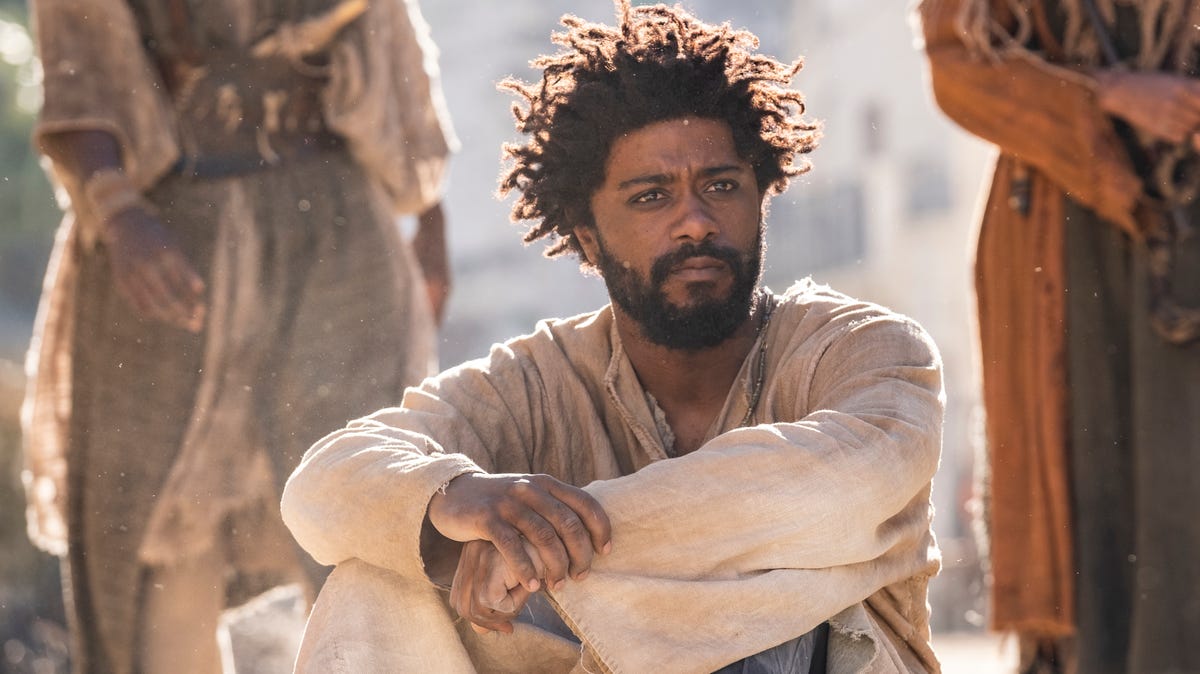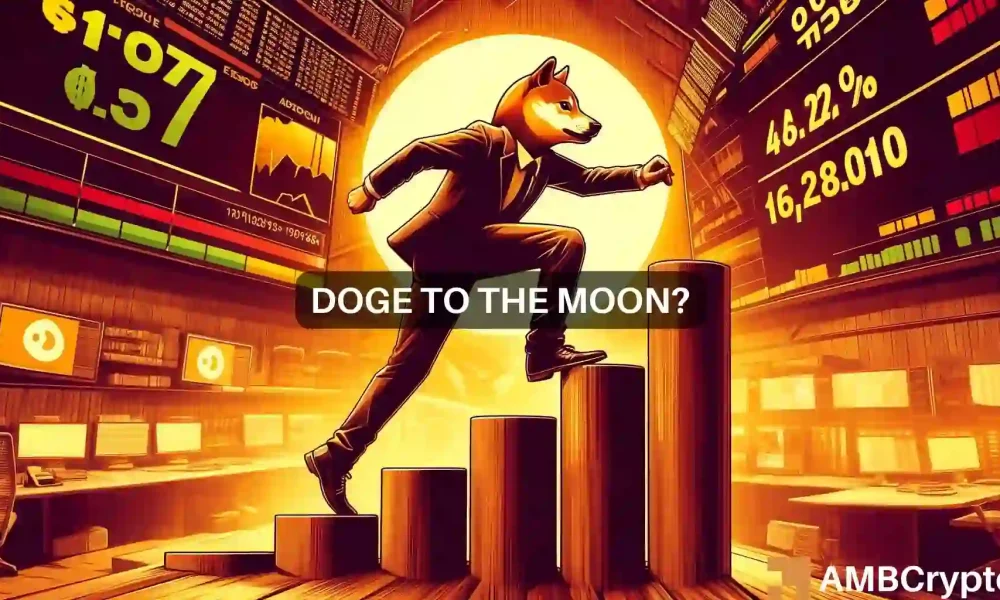‘The Book of Clarence’: New film brings irreverence to biblical epic
LaKeith Stanfield stars as a man living in Jesus’ time who decides to follow suit and proclaim himself a messiah in “The Book of Clarence.”
Spoiler alert! We’re discussing important plot points and the ending of “The Book of Clarence” (in theaters now), so beware if you haven’t seen it yet.
“The Book of Clarence” tells a different sort of Bible story, with its title character turning false prophet in the time of Jesus Christ to make a buck. However, writer/director Jeymes Samuel turns serious by the end of it, reimagining the crucifixion and resurrection with modern resonance.
Set in A.D. 33, the movie – a Black perspective on the biblical epic genre – stars LaKeith Stanfield as Clarence, a weed-dealing Jerusalem man who sees the way people treat Jesus and his apostles and wants the same respect. He proclaims himself the “new messiah,” stages Jesus’ miracles with his friend Elijah (RJ Cyler) and takes money from the public.
Clarence begins to do some good, like freeing slaves, but he’s arrested by Pontius Pilate (James McAvoy), who’s after “false” messiahs like Jesus (Nicholas Pinnock). Much to Clarence’s own surprise, he doesn’t sink when the Roman governor orders him to walk across water, and Pilate is forced to crucify him.
Through Clarence, Samuel re-creates Jesus’ carrying of the cross and crucifixion with brutal effectiveness. Clarence struggles to get up the hill with the cross as onlookers throw things and Roman soldiers whip him, and at one point his mother (Marianne Jean-Baptiste) shouts out, “They always take our babies!”
‘The Book of Clarence’: How the new movie brings ‘majesty’ back to the Hollywood biblical epic
‘The Book of Clarence’ veers from the iconography of a ‘blue-eyed Jesus’
The burden Clarence carries in the scene is “the cross that we all bear,” says Samuel. “That’s a thing that we feel growing up in our ‘hoods and surroundings, and our parents feel that they always take our babies. There’s a lot that has changed, but a lot that hasn’t.
“It was a truth that I had to tell,” the filmmaker says. “Along with the laughs and the smiles and the joy and the laughter, there’s also the pain that you don’t see coming until the day it happens, but it’s always hovering over us.”
The image of a Black man trudging toward his crucifixion “shakes us out of the anesthetized version of that,” says David Oyelowo, who plays John the Baptist and is himself a devout Christian. “We’re so used to that iconography of a white, sometimes blond, blue-eyed Jesus with this cross. Having it so far outside of what we have previously seen means you’re suddenly able to engage with that in a different way.”
Stanfield recalls a “cornucopia of feelings” during filming. “The cross wasn’t unreasonably heavy but also wasn’t light,” says the actor, who took his shoes off to feel the stones under his feet. “The imagery of being slashed across the back with a whip did not go over my head and what that could be indicating or mean: power structures and how oppression has been used to keep people docile.
“I almost felt like I was carrying just years and years of wanting to speak the truth, of someone wanting to get by, wanting to release and not being able to. And so it made every step worth it, and it made the blood, sweat and the harder aspects of that worth it.”
Jeymes Samuel’s inspired resurrection scene has a message for all of us
And just like in the Bible, Clarence dies on the cross but is resurrected. In the movie’s final scene, Jesus breaks the stone of the tomb where Clarence has been buried and tells him to rise. “The one who believes in me will live even though they die,” Jesus says to Clarence, as a light bulb turns on over the former nonbeliever’s head and he smiles and cries.
Samuel wanted the audience to leave with an image of themselves: “We’re here, we’re alive,” he says. “Clarence has been given another chance, so what is he going to do with his time?”
He was partly inspired by a memory he had of being 11 and believing that time was an acronym that meant “this is my era.”
“When you think about that, you find yourself treating people a lot better,” Samuel says. “You’d be much more conscientious of what you are doing with your moment. Because really, we are only here for a glimpse beneath the rays of the sun. But in that glimpse, the sun belongs to us. What are you going to do with it?”
From ‘Barbie’ to ‘The Holdovers’: Here are 15 movies you need to stream right now

Carol Dennis is an entertainment aficionado with an eye for all things pop culture. She dives into the glitz and glamour of the entertainment industry, from movie premieres to music festivals. Carol’s passion for storytelling extends beyond her reporting, as she’s an aspiring screenwriter in her free time.




/cdn.vox-cdn.com/uploads/chorus_asset/file/25419756/247094_When_the_walls_of_Apple_s_garden_came_tumbling_down_MWares.jpg)


